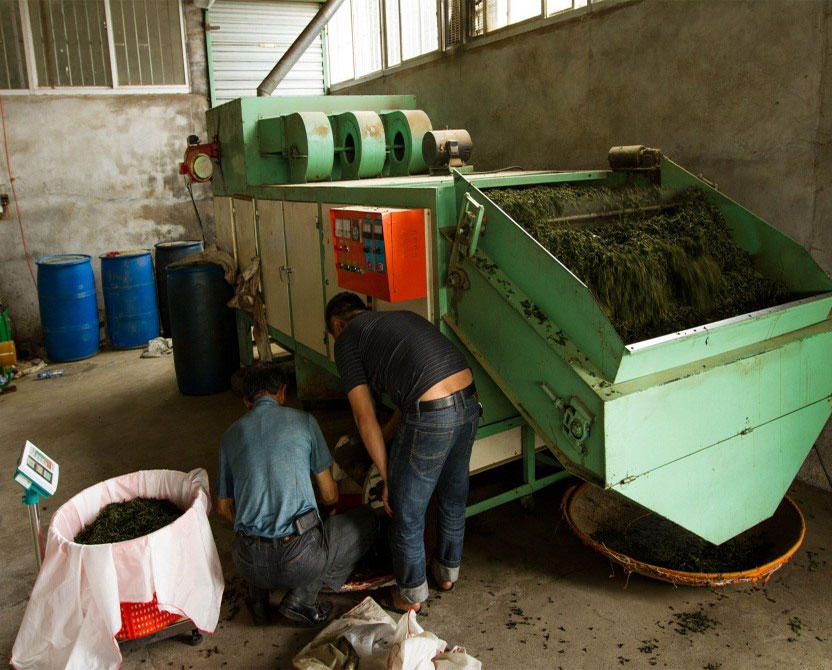Drying in Tea Processing
In order for processed tea leaves to be shelf-stable, they must be dried. There are two reasons for drying tea though, to dry the leaf, making it shelf stable, and to enhance the flavor. At times, these can be two distinct steps in processing and at other times, it can be seen as more of a continuum, and sometimes teas are only dried for shelf-stability. For our discussion here, I’ll explain each separately.
Photo Credit: Michael Petersen
Most common drying methods:
- Commercial dryers: where perforated conveyors move the tea leaves through a heat source in an endless chain, or fluidized bed dryers where tea leaves are dried on a bed of hot air (see above photo).
- Oven drying: where tea is set on perforated trays in an oven and hot air is circulated through the tea via convection.
- Sun drying: where tea leaves are spread outdoors usually on shallow bamboo baskets to dry in the sun (see photo at top of post).
Less common drying methods:
- Charcoal firing: where tea leaves set in a shallow bamboo basket are heated slowly over hot coals.
- Drying on heated floor: where tea leaves are dried on a thick masonry floor heated from below.
Drying For Shelf-Stability
Drying for stability means reducing the moisture level in the tea leaves to 2-3%. Doing so makes the leaves shelf stable and slows oxidative processes within the leaves to nearly a full stop. Tea makers control the temperature of the air, the volume of air moving past the tea, and the amount of time that drying occurs to produce a palatable tea. Drying the tea too slowly results in stewing, and drying it too quickly results in the outside of the leaves drying much quicker than the inside, a condition known in tea production as case hardening. In fact, “an average loss of more than 4% moisture per minute leads to bitterness and harshness in made tea. Moisture loss at 2.8-3.6% per minute has been found to produce teas with good quality.
Drying For Flavor Enhancement
Drying for flavor enhancement refers to two optional processing methods known as finish-firing and roasting. Both involve heat, and can be seen as distinct processing steps, or part of drying for shelf-stability. Not all teas are finish-fired or roasted, typically these processes are reserved for higher-end teas and are skipped in commercial tea production.
Finish-firing refers to a very low temperature heating of tea leaves for several hours, typically in an oven or in shallow bamboo baskets over hot coals before being packed and shipped. This enhances the flavor and aroma of the leaves but doesn’t necessarily change it.
Roasting on the other hand refers to a method of heating that is meant to change the flavor and aroma of the tea, typically adding toasty, burnt notes and resulting in a darker tea and a darker infusion depending upon how long the tea is roasted and at what temperature. Roasting also occurs in an oven or in shallow bamboo baskets over hot coals.
Featured image credit: Michael Petersen
Written by: Tony Gebely


